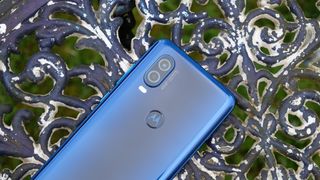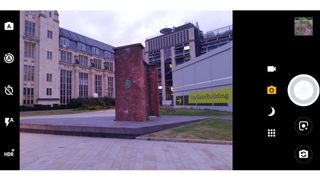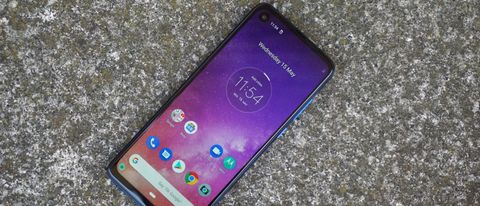Why you can trust TechRadar
Battery life
- 3,500mAh battery
- TurboPower charger in the box
With a faster chipset and a bigger, sharper display, the Motorola One Vision really needed a bigger battery than the Motorola One’s 3,000mAh unit. Thankfully, it got one.
Sure enough, the 3,500mAh battery here is sufficient to get the One Vision through a full day of usage. We perhaps weren’t left with quite as much headroom as we were with its predecessor, but on particularly light days we were still left with as much as 50% come the end of the day.
More commonly, with more intensive usage, we’d be left with 20 to 30%. This isn’t a two-dayer by any stretch of the imagination, but then few of its rivals are either.

Even if you do run short of juice before the end of the day, Motorola’s TurboPower fast charging standard provides a reliable way to juice up quickly. You get a 15W TurboPower charger in the box, too, which isn’t always a given at this price point.
We plugged the phone in for 15 minutes and found that the charge level rose from 44% to 62% - a rapid accrual of 18% of its charge.
Our regular video test, which plays a 90-minute looping video in 720p, yielded average results. With 17% lost, the Motorola One Vision scored the same as the Honor 20 Lite, and soundly trumped the Moto G7 Plus on 22%.
Camera
- 48MP Quad Pixel camera is an improvement
- Still struggles a little with exposure
Motorola doesn’t typically have the best camera tech in the business, but the modest camera efforts of the Motorola One just about hit par for the price.
While the Motorola One Vision isn’t quite as huge an improvement as we might have hoped (and Motorola seems to claim), we can at least offer an improved appraisal of ‘comfortably hitting par’.
You don’t get any of the triple camera heroics of the Honor 20 Lite, but the One Vision’s dual-camera system makes its own impressive-sounding claims.

The main snapper is a 48MP f/1.7 sensor with optical image stabilization, and it employs Quad Pixel technology to produce 12MP images. Each pixel boasts improved light sensitivity and detail as result.
This is backed by a 5MP secondary camera for depth-sensing purposes, which also pays off in the phone’s Portrait Lighting mode.
It’s a shame we don’t get a telephoto lens here, or the wide-angle lens that has also become popular. But the Google Pixel 3 family only uses the one camera, after all, and it remains one of the best in the business.
What matters is the general picture quality, and on that front the Motorola One Vision produces some encouraging results. Images tend to have a sense of depth and clarity that you don’t always get in a budget phone, though they’re not going to be troubling the Pixel 3a for sharpness.

Using the dedicated Night Mode does indeed yield brighter, more defined shots, though it also serves to accentuate some of the ugly noise that accompanies them.
We were a little disappointed with the camera’s tendency to overexpose, particularly when it comes to bright skies. It seems the automatic HDR is kicking in, but it doesn’t do a good enough job at reining in extremes of light and shadow.
Elsewhere, the camera app packs some cool little features, such as Spot Color, while lets you pick out a single color from a scene and grey out the rest. How often you’ll use this is debatable, but it can produce some powerful results if you pick your moments.
Camera samples








Current page: Battery life and camera
Prev Page Introduction, key features and design Next Page Anything else I should know?
AI could be the prescription that healthcare systems need so desperately

Intel piles pressure on Nvidia with launch of new AI accelerator that is faster and cheaper than the H100 — but will it be enough to keep up with the stunningly fast H200?

I tried Samsung's new small OLED TV, and it's a winner despite lacking Dolby Vision HDR
